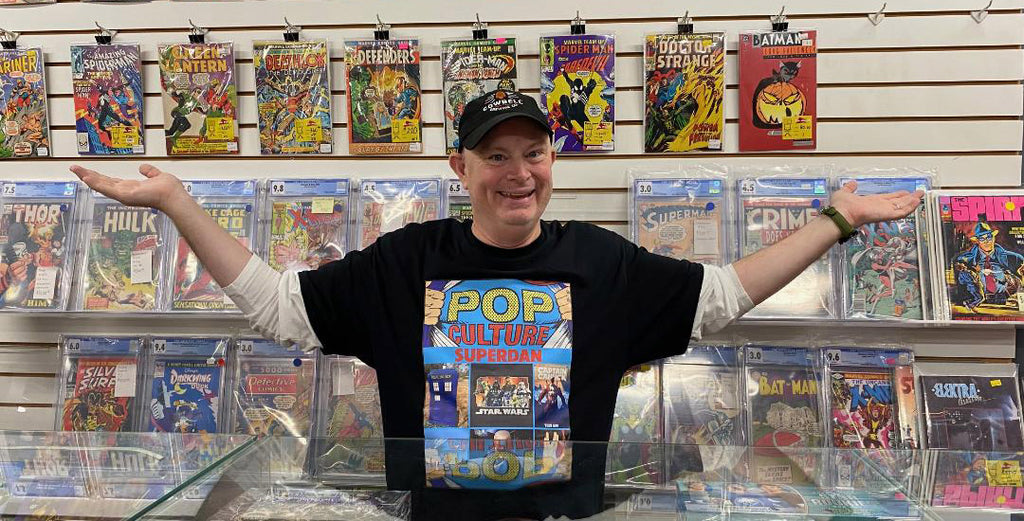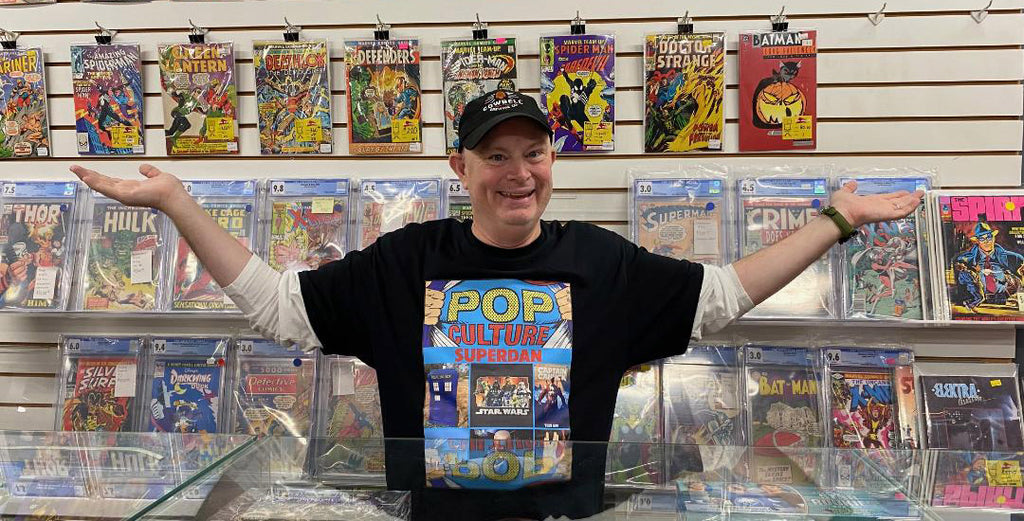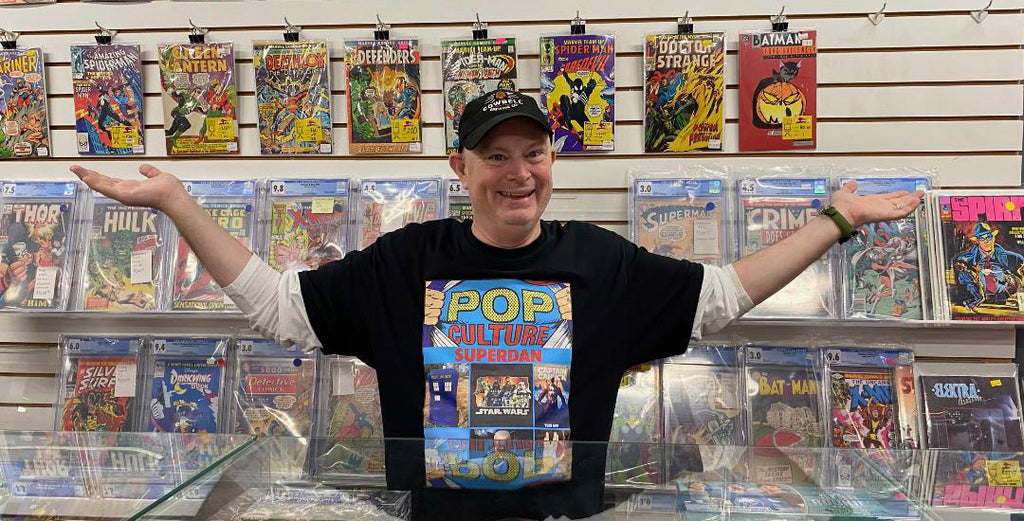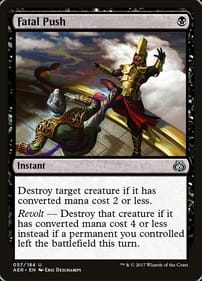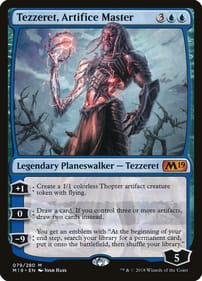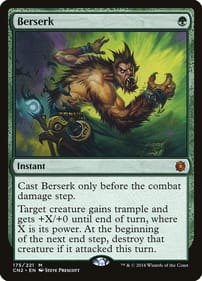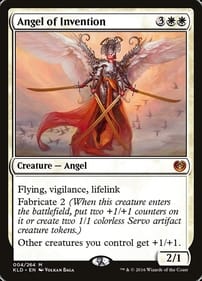Now This is a Fun Godzilla
By Dan BrownAs you may have heard, this Saturday (November 2) is Godzilla Day at L.A. Mood Comics & Games. It’s the store’s way of celebrating the giant lizard’s 70th anniversary on the silver screen.So here’s my two cents.Godzilla has appeared in a lot of comics over the decades, but few are as fun as the Essential Godzilla: King of the Monsters, which collects all 24 issues of Marvel’s 1970s series featuring He-Who-Stomps-Tokyo.Marvel jumped on just about every bandwagon in those days. Does anyone remember Dazzler, the mutant who had all the powers of . . . a glitter ball? The thinking was, if disco music or Alice Cooper or kung-fu movies or the Human Fly are a sensation in pop culture, then surely a comic featuring the same trend du jour will be a hit.Those comics – generally done on the cheap – are the ones that defined my childhood. And the fact this Godzilla series lasted two years is a testament to how popular it must have been.The first issue appeared in 1977 (the same year Star Wars, and the ensuing Marvel adaptation, took off) and within the first few pages the book’s creative team (artist Herb Trimpe and writer Doug Moench) effectively meld Toho Productions continuity with that of the Marvel Universe. Surprise! It turns out Godzilla was always in the same world as Spider-Man, the Avengers, and the Fantastic Four! That opens up a lot of possibilities.The challenge for the creators was in having a central character who is kind of like another big G, Galactus, except not as talkative. Godzilla is a force of nature, so he doesn’t really speak a lot, unless utterances like these count as dialogue:– Shreeaww– Hrahhh– Graww– Mraww– Reeaww– MeeawrrMan, I love old-timey sound effects! I’m sure Trimpe and Moench had a ball coming up with them.And as with Galactus, there is a running debate in this series about Godzilla’s essential nature. Is he like a snowstorm, and therefore beyond morality? Or is his trampling of landmarks like the Hoover Dam proof of malevolence? Is he driven solely by animal instincts, is Godzilla – as one character exclaims – an “overgrown gila monster”? Could there even be a noble heart under that scaly hide?So, back to those Marvel guest stars.Nah, they didn’t use them to full advantage.I’m guessing the editors who were in charge of other Marvel heroes at the time didn’t want to loan out their A-list characters. The ostensible human star of the Godzilla comic is Dum-Dum Dugan, who is in charge of SHIELD’s Godzilla capture team. Yeah, they couldn’t even get Nick Fury.You know Dugan as the Second World War veteran with a bowler hat and walrus moustache who was somehow still wah-hoooing 30 years later. At least with Fury Marvel's writers made up some story about a de-aging formula making him immortal (or something). And where Dugan was on the winning side in the battle against the Nazis, he is forever being bested by Godzilla. You will also recognize Dugan because he says things like “Looks like it’s time for old Dum-Dum to bail outta the jaws o’ death. Never could stand bad breath,” the latter being a reference to Godzilla’s ability to spew nuclear fire.Later, some bigger stars do appear, but funny thing: I never remember Spidey or Mister Fantastic or the Vision referring to Godzilla in their own titles. You’d think, because he was a menace to all of North America in this series, word would have gotten out to the larger Marvel Universe. But does Godzilla fight other monsters, you ask. You bet. Among his foes are Batragon, Centipor, Ghilaron, and Lepiraz, any of which could easily pass as the brand name for a depression or weight-loss medications. Next up: Godzilla takes on Ozempic!While Godzilla’s Marvel days may have lasted a rollicking two years, the comic version of that other movie from 1977, Star Wars, helped Marvel stay afloat back in the day. In fact, the company continues to produce Star Wars content to this day, proving that if even just one trend-inspired comic series pans out, it can be a boost to a publisher’s bottom line for a long time.And if comic books aren’t your thing, just take a look around L.A. Mood on Saturday as Godzilla Day unfolds. The friendly staff will have whatever merch you crave! Dan Brown has covered pop culture for more than 31 years as a journalist and also moderates L.A. Mood’s monthly graphic-novel group.
Sentinels is Dark and Looks to Get Darker
By Dan BrownSentinels No. 1 has an intriguing premise, but man is it dark. With such a grim start, I’m not sure where the new series will go from here. Can it get any more dystopian?Billed as Marvel’s token “bad-guy book” among the company’s 18 (by my count) X-titles, it features a cast of military types who have been implanted with sentinel technology. They are machine/human hybrids whose goal is to forcefully corral mutants, then bring them to prison.In keeping with the dystopian theme, the prison is housed in the basement of Professor Charles Xavier’s former school for gifted children i.e. mutants. But where Xavier’s dream was to find a way for mutants and humans to co-exist, the sentinels are programmed – and kept in line with mood-regulating drugs – to use violence to bring them in. It’s a world turned upside-down.This all takes place in Marvel’s post-Krakoa universe. Last time I checked in with the X-Men, they were living pretty much as immortal gods on the sentient sanctuary island. I wondered what Marvel was going to do with its mutant characters once that storyline ran its course, and now readers are beginning to find out. (Marvel has said it will be concentrating more on solo titles featuring the likes of Wolverine and Storm as the mutants reintegrate into society.)Not to be trusted with their genocidal instincts, the giant sentinel robots themselves have been powered down in favour of these cyborgs. The danger for the bad guys, who have code names like Lockstep, Drumfire and Sawtooth, is that the cybernetic implants have a tendency to take over their minds and bodies completely, a process called “full grafting” which destroys their remaining humanity.The issue is a finely crafted comic, with art by Justin Mason and writing by Alex Parknadel, creators whose work is new to me. Let’s just say the result is not something Jack Kirby and Stan Lee would ever have dreamed up.There’s also friction between the civilian who pulls the team’s strings, the mutant Lawrence Trask, and the military commander on the ground. It’s reminiscent of what happens in pro sports when a coach can’t get along with his or her general manager.The issue starts with the team dropping into an isolated Russian village to take the homicidal mutant “Omega Red” into custody. Naturally, things don’t go according to plan.There are dark hints as the issue unfolds about how the incarcerated mutants are being treated, which seems to be even worse than the sentinels themselves. They operate in a world in which there are no clear moral lines between human and mutant or organic and mechanical.Some of the team members rationalize their missions by stressing that all they are is hunters – what is done to the captive mutants once they have been put into a cell is none of their business.We also get a glimpse of Trask’s motivation when he recalls the story of two neighbouring villages in thirteenth-century England during a wolf cull. Once the animals victimizing the two communities have been dispatched, he explains, the residents turned on each other.Trask reasons that his role in backing the sentinels is to keep humanity and mutantkind in a kind of equilibrium or stasis so they don’t massacre the other. The sentinels are the “necessary monsters” who keep a “fragile peace” between humans and homo superior. Speaking of Magneto, he doesn’t appear in this issue, but his former ally the Blob does. There’s a different archvillain from the X-Men’s past who graces the story’s final page. You’ll never guess who it is, but I didn’t see his appearance coming. Dan Brown has covered pop culture for more than 32 years as a journalist and also moderates L.A. Mood’s monthly graphic-novel group.
The Marvel Universe: An appreciation
By Dan Brown Did you ever have one of those posters showing all the Marvel superhero characters gathered together in one place? Over the decades, successive generations of Marvel artists have depicted that crowded scene – row after row of colourful do-gooders, a cast of literally thousands, standing at the ready to fight evil.. Whether this heroes’ gallery was drawn by Jack Kirby, John Byrne or Michael Golden or someone else, my jaw hits the floor every time I see it. I am in awe of the creative energy it must have required to come up with backstories and costumes for all of them. So what I want to do this week is take a moment to praise the folks at Marvel for doing such a good job of churning out one interesting character after another since 1939. This will come as no surprise to regular readers who know I was raised on Marvel Comics in the 1970s. (And don’t worry, DC fans, I’ll do a tribute to that company’s stable when I figure out the right way to do it.) When it comes to being prolific, no other comic publisher has the track record Marvel does. What a riot of invention! What a unique assemblage of talent! What a big bang of creativity that set and kept the Marvel Universe in motion! The Marvel Universe is what results when the right talented people get together and are allowed the freedom to let their minds wander. It’s an example of what no less an authority than Willy Wonka calls “pure imagination.” Jack Kirby and Stan Lee – who launched such comics as the Avengers, the Fantastic Four, the Incredible Hulk and the Uncanny X-Men – were undeniably the creators among creators at Marvel. I don’t want to get too much into the weeds on the question of which man possessed the real vision, so let’s just state for our purposes here today that Kirby and Lee combined are among the greatest and most prolific American originators of characters, in the same league as Walt Disney, Jim Henson, Dr. Seuss and Mark Twain. It’s true the different creative teams at Marvel were motivated by economic necessity. They never met a trend they didn’t try to plunder, like the disco craze. No sooner, it seemed, had Studio 54 opened than Marvel came up with the mutant Dazzler – who has all the powers of a disco ball! When kung fu movies likewise hit it big, Marvel answered with Shang-Chi and Iron Fist. Sometimes the plundering was done for the right reasons, as when characters like Black Panther and Power Man were devised to give black readers heroes of their own. Although some fans have by now grown weary of the offerings from Marvel’s movie division, the studio hasn’t even begun to scratch the surface of the vast library of characters it owns. No one would call the comic-book Agatha Harkness a major Marvel character, but there’s currently an entire series streaming right now devoted to her solo adventures. A series about Wonder Man – another B-list character – is set to debut next year. As someone who appreciates and values imagination, I can’t help but be deeply impressed by how productive Marvel has been over the decades, creating a surplus of diverse characters who have now become recognized around the world. And yes, the chumminess of the Marvel Bullpen was likely an illusion created by Lee to help infuse the Marvel brand with an air of fun, but at the end of the day we are still left with what all of those artists, writers, colourists, letterers and editors wrought: An entirely original group of compelling heroes. There’s literally a character for everyone. I stand in awe. Dan Brown has covered pop culture for more than 31 years as a journalist and also moderates L.A. Mood’s monthly graphic-novel group.
Let’s Stop This Comic Trend While We Still Can
By Dan BrownIt started, as far as I can tell, with Watchmen back in 1986.And it ends now, if I have anything to say about it..What am I on about?I’m not even sure what the correct term is. Some call it “back matter,” others say “supplemental material.”I’m referring to the several pages of prose that appeared in every issue of the landmark DC series back in the day. The same material was reproduced when all 12 Watchmen issues were collected into one volume and sold as a graphic novel.In Watchmen, it took the form of faux newspaper articles or documents or book excerpts that shed light on the rest of the story and the characters in it. Alan Moore came up with the stuff when DC was unable to sell ads in the individual issues of what was then an experiment in more mature storytelling.I don’t honestly know how many other comics have used the same device. I have noticed that at least one other series – the alien-invasion tale Wild’s End by Dan Abnett and I.N.J. Culbard – features the same kind of afterword section. I recently read the collected Wild’s End for L.A. Mood’s graphic-novel group, it was one of the books we covered this summer. And each chapter ends with supplementary material.In individual Wild’s End issues, which started appearing in 2015, the back matter takes up as many as five pages. The goal appears to be the same as with Watchmen — to give readers pertinent information in a way that adds context and shading to the story told in comic panels in the front of the book.Maybe you’ve read comics with the same device. I know there is a vast audience out there of comic enthusiasts who don’t even bother to read these pages, which are akin to the bonus material you get with a DVD.In the ideal case, these back pages would flesh out certain aspects of a given story, supplying readers with an even deeper reading experience. That’s fine, but what I fear is these prose epilogues will become the norm.I’m not opposed in every instance to non-comics material in my comics. I grew up reading Marvel Comics in the 1970s and at least two pages in every issue of, say, the Uncanny X-Men, were devoted to a letters column and Bullpen Bulletins. I loved that stuff, it was fun. Those pages made me feel like I was a part of the Marvel community at a time when there was no global communication device like the internet (you can imagine how crushed I felt to learn Stan Lee had made up reader letters in some early Marvel issues). But enough already.This is a pet peeve of mine I’m hoping comes to an end before other creators take it up and it becomes a full-on trend.For starters, five pages out of an individual issue is just a huge chunk of space. I know the justification is that certain aspects of a story are better told in text, but if you’re like me, you don’t like chocolate in your peanut butter. Prose already has a showcase, they’re called books.Taking five pages away from a powerful creative team is too much of a sacrifice. With five extra pages an issue, a creator like Jack Kirby could have launched whole new universes full of interesting characters, concepts and locations.And, frankly, those prose pages never have the same impact as the rest of a chapter or a specific single issue. Reading them feels like homework, frankly. At least it does to me.Also, they just reek of literary pretense. Comics don’t have to be more like books. They are a perfectly legit artform without text passages, so let’s nip this incipient trend in the bud.Creators, the work you do with drawings and word balloons is perfectly fine on its own. You don’t need a prose section at the back of your latest comic to give you credibility, comics are perfect the way they have always been presented.Disagree? I’d love to hear why in the comment box below!Dan Brown has covered pop culture for more than 31 years as a journalist and also moderates L.A. Mood’s monthly graphic-novel group.
If I’m Not Reading A Book, I’m Lost
I feel weird.I’m at a loss. Like a part of me has gone missing.I’m uneasy. At loose ends.I feel . . . lacking. Out of sorts. As though something unnatural has happened to me.It can only mean one thing.There’s nothing on my nightstand.That’s right: I don’t have a book on the go at the moment.Hard to believe, I know, but your L.A. Mood graphic-novel correspondent isn’t reading anything right now. Talk about unnatural!I don’t know if I’m the only person who feels this way, but my usual state of being is that I have my nose stuck in at least one book.Sometimes more than one.But at this moment, I’m between books. I finished a bunch of graphic novels at the end of August, and I have yet to decide what’s next on my reading journey. This doesn’t happen often. I typically have a long mental list of the titles I want to tackle.But for whatever reason or non-reason, I haven’t been able to settle on my next reading choice.Why does this make me feel leery? I guess it’s because having a book beside my bed is the natural state of things for me, whether it’s a graphic novel or a non-fiction title or something else.Not to be all psychoanalytical about it, but reading has been a constant in my life since my parents read to me as a little kid at bedtime.Out of all the generous things they did and do for me, this has had the most powerful impact on the person I am today. They gave me the gift of literacy.Every night, there would be a book like Are You My Mother? by P.D. Eastman or a Dr. Suess title or a volume from Richard Scarry.If I was cranky and they wanted to get me to take an afternoon nap, my parents would offer me a “read rest,” which meant I would work my way through a pile of books until I dropped off, thus forever connecting two of life’s most awesome things – reading and sleeping – in my mind.These gave way to more mature books as I aged, and it wasn’t long before I was reading on my own. Comics like Fat Albert, Star Wars, and Captain America came first, followed by the Merlin trilogy from Mary Stewart and the pulpy Morgaine books by C.J. Cherryh.Naturally, English was my favourite class in high school and I picked up an undergrad and grad degrees in the same topic prior to heading to Ryerson for my journalism education. I don’t want to overstate it, but reading has been a thread running throughout my life. And of course I married an avid reader who burns through a different urban fantasy every couple days. When we finished our basement in Poplar Hill, she and I agreed there had to be room for lots of bookshelves – finally, a library of our own.I agree with the columnist who once wrote that some books aren’t just books for me, they are events in my life. Turning points.Marvel comics fascinated me with their wordplay. Where else was I going to see terms like “mutant,” “stasis,” “uncanny” and “eldritch”?Although he was a fiction writer, Charles Bukowski has influenced my journalism writing deeply. And when I stumbled across James Stockdale’s A Vietnam Experience in the D.B. Weldon Library at Western University, I began my lifelong quest to be a Stoic.The problem, come to think of it, may be that there are too many books I want to read right now.So I feel kinda paralyzed. Ever felt that way?I had a friend in grad school who had a solution. He told me once that he wanted to be a university professor so badly because he figured it was the only job where he could get paid to read for a living.If you have any suggestions for what I should read next, I’m all ears. Oh, and what book do you have on the go right now? I’d love to hear all about it in the comment section below! Dan Brown has covered pop culture for more than 31 years as a journalist and also moderates L.A. Mood’s monthly graphic-novel group.
Make mine Byrne
What you probably don’t know about the Forest City is how it’s the hometown of the leader of the Marvel comics superhero team Alpha Flight.That’s right, James (Vindicator) Hudson hails from London, Ontario.This bit of trivia is on my mind because last October the company re-released the Alpha Flight comics by John Bryne Omnibus, which collects the team’s early exploits in its own title and others from the 1970s and 1980s.I’m almost 600 pages into the hefty tome, which clocks in at 1,248 pages long. Being a fan of Byrne, the sometime Canadian artist/writer, obviously I love the thing.I began following his work earlier in the Me Decade when he penciled titles like Doomsday+1 and Space: 1999.What can I say? Something about his precise, elongated lines spoke to my younger self. I was part of the generation whose puppy love for superheroes grew into something deeper when Byrne was assigned to such Marvel titles as Iron Fist, Team-Up and, of course, the Uncanny X-Men.We were Wolverine fans before the Canadian X-Man became an unkillable killing machine. And we were thrilled when Wolvie’s former allies, Alpha Flight, got their own series.What we didn’t know was Byrne did not have a fun time doing the first 29 issues of Alpha Flight, which appear in this collection along with their appearances in mags like the Incredible Hulk, Machine Man and Two-in-One. For a while there, the Alphas – Sasquatch in particular – were perpetual Marvel guest stars.As he has stated in interviews in the years since, Bryne was frustrated with the limits of Canada’s own super-team. All Alpha Flight had been created to do, he famously noted, was to survive a fight with the X-Men. They were flimsy, two-dimensional.Some fans have pointed to how Bryne would kill off major characters as evidence he had soured on the character. Which didn’t stop the title from selling. Indeed, his first royalty check for Alpha Flight, at a time when royalties were not standard practice at Marvel, was reportedly the biggest Marvel had issued to that point.What jumps out at me in the omnibus edition?*Wolverine had his roots as a mortal character. In one X-Men story collected here, he even gets winded from running a lot. That destructible version of the character is long gone.*Byrne has spoken of how he always wrote Northstar true to his sexuality, even before Marvel was ready to reveal him as the company’s first queer superhero. It checks out. From the vantage point of being an adult reader, it’s clear Northstar is gay.*Vindicator, who changed his name to Guardian, was just getting interesting before he died in action.*I love Byrne’s depiction of Canada as home to ancient evils. He handled both pencils and inks on Alpha Flight, which means each panel lacks the background detail of when Terry Austin was inking his work in X-Men.*The issues here have a good balance of magic-driven storylines, street-level adventures and out-and-out superheroics. A favourite Byrne villain, the Super Skrull, even makes an appearance.*Each issue raises as many questions as it answers. Byrne was doing a superb job, given the constraints of monthly comics, of adding layers to each character. Keep in mind he was in the middle of a long run on Fantastic Four at the same time he launched Alpha Flight. All in all, the Alpha Flight by John Byrne Omnibus is a worthwhile trip down Memory Lane for any comic fan who grew up Marvel.Dan Brown has covered pop culture for more than 31 years as a journalist and also moderates L.A. Mood’s monthly graphic-novel group.


